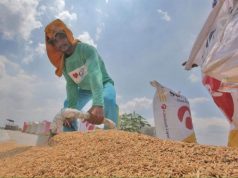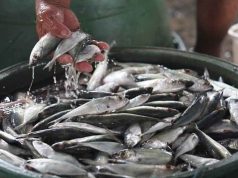
MANILA — The Philippines lost a total of 250,730 tonnes of paddy rice due to the strong typhoon that hit its northern provinces over the weekend, according to initial official estimates, exceeding a worst-case forecast by 60 percent.
The Philippines, one of the world’s biggest rice importers, had been under pressure to boost its stocks of the grain even before Typhoon Mangkhut struck, with soaring retail prices helping to push inflation to its highest in nearly a decade.
The Department of Agriculture initially estimated crop damage at about 9.6 billion pesos ($177 million), but said that may increase as more field reports come in.
“We’re looking at about 11 to 12 billion (pesos) in agricultural damage,” Agriculture Secretary Emmanuel Piñol said in an interview with CNN Philippines.
“It’s not a nice figure to look at.”
Typhoon Mangkhut has swept over Hong Kong and Macau and on into China’s southeast province of Guangdong, after devastating the Philippines, where the death toll is likely to surpass 50.
More rice, corn imports likely
Even before the storm hit, the Philippines had already planned to import an additional 383,500 tonnes of rice this year, on top of approved purchases earlier this year of more than 1 million tonnes.
The state grains procurement agency, National Food Authority, also has a “standby authority” to import an additional 250,000 tonnes for delivery early next year.
Prospects of new deals with the Philippines pushed up export prices last week from its main supplier Vietnam.
The nation’s rice crop losses from the typhoon were bigger than the agriculture ministry’s forecast of up to 157,000 tonnes in a worst-case scenario.
“The rice sector could recover because we have coordinated with the National Irrigation Administration … to not close the irrigation systems because right after the typhoon our farmers actually could replant,” Piñol said in the interview.
“But for corn, it’s a sad sight. Almost all crops were damaged,” he said. Pinol said he may recommend that the country also import corn to fill the possible shortfall.
Pinol downplayed the impact of rice crop losses on prices, saying there are still enough stocks in typhoon-hit regions and that the harvest season in other areas has begun. — Editing by Richard Pullin and Tom Hogue









